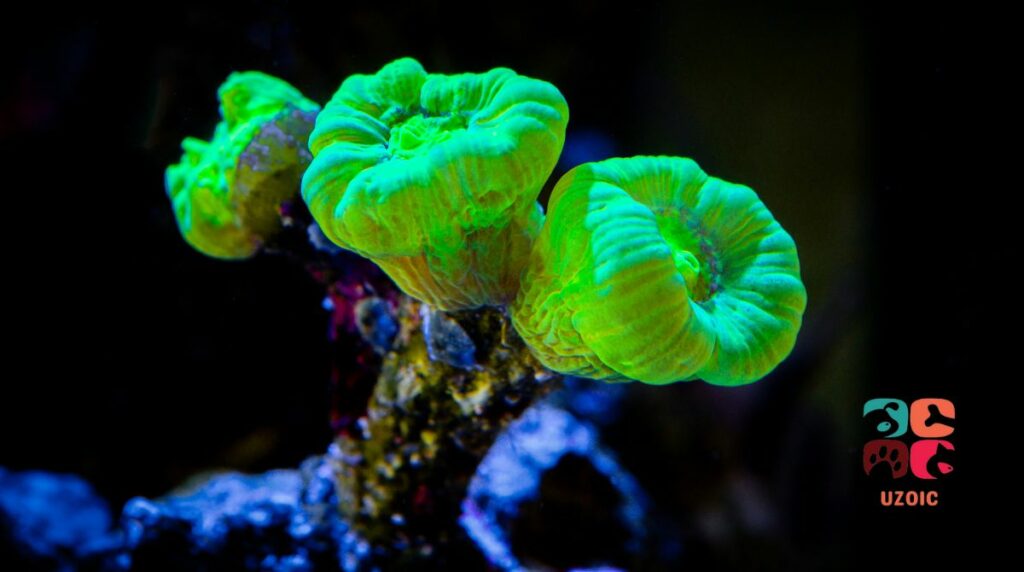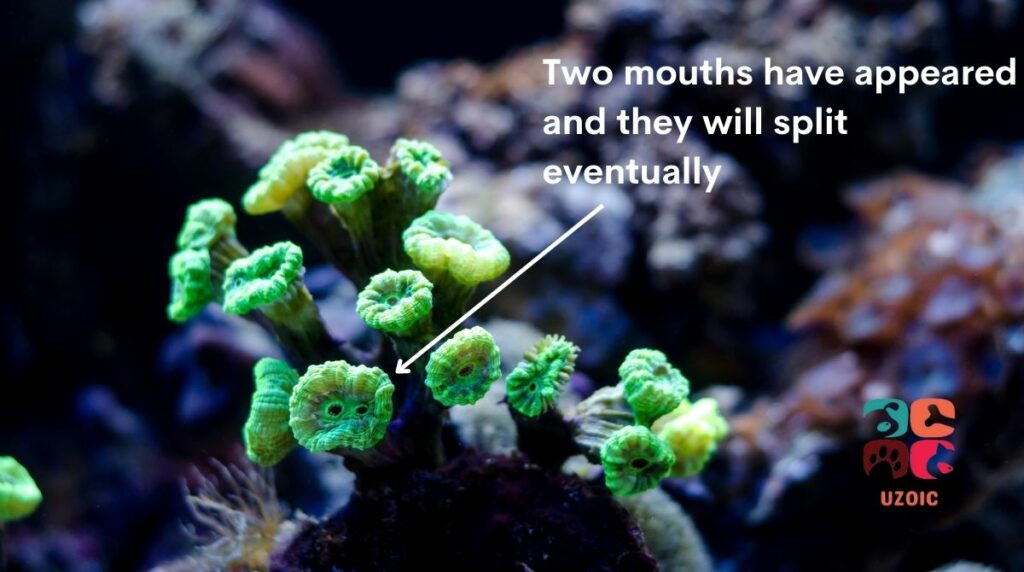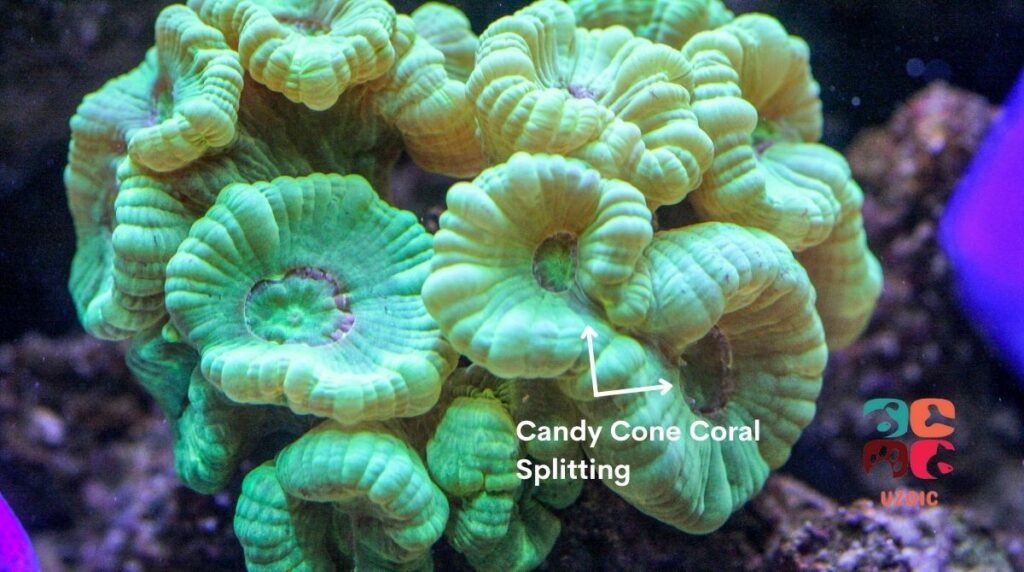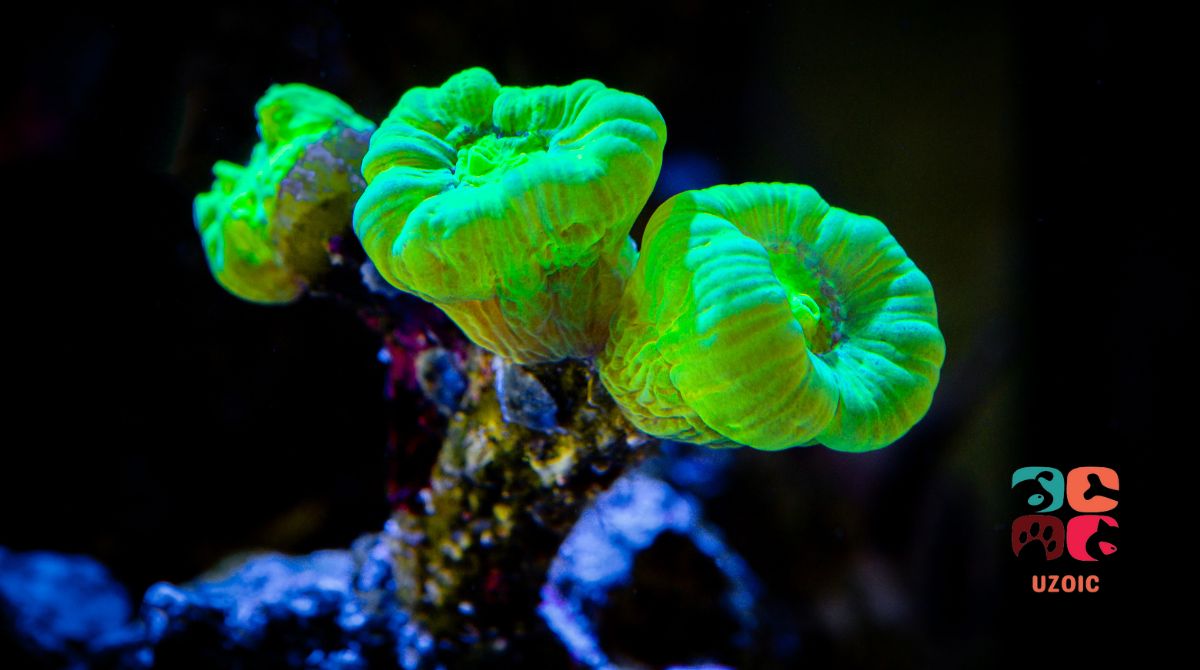If you have a Candy Cane Coral in your tank, you may be wondering why it is splitting. This is a common occurrence for Candy Cane Corals, but don’t worry – it’s not a sign that your coral is dying. In fact, Candy Cane Corals are known for splitting and growing new colonies. So if your Candy Cane Coral starts to split, don’t panic – it’s just doing what comes naturally!
Candy Cane Corals split for a variety of reasons. One reason is that the coral is simply getting too big for its current location. When Candy Cane Corals split, they create new colonies that can then be moved to other areas of the tank. This helps to keep the Candy Cane Coral population healthy and thriving.
Table of Contents
Why Is Your Candy Cane Coral Splitting?

If your candy cane coral is splitting, don’t worry – it’s perfectly normal! Coral growth is a process of asexual reproduction that allows corals to quickly spread and colonize new areas. When a candy cane coral splits, each half will produce a new stalk, eventually leading to two healthy heads. This process can be repeated multiple times, resulting in an ever-expanding colony of corals. So why not sit back and enjoy the show as your candy cane coral multiplies before your eyes?
How To Tell If A Candy Cane Coral Is Splitting?
A few telltale signs can help you determine whether your candy cane coral is splitting. One of the key indicators is if the coral appears lumpy or uneven in shape. Additionally, watch for any unusual discoloration in the area where the coral appears to be growing. If there are thin, translucent tendrils protruding from the main body of the coral, this may also be an indication that it is on the verge of splitting. Finally, keep an eye out for any visible cracks or fissures within the center of the candy cane coral; this could indicate that it is ready to split in two. Overall, by carefully observing these signs and paying close attention to overall health and shape of your coral, you should be able to tell if it is about to split into two separate pieces.
Here is an example of candy cane coral splitting:

Here is another example of candy cane coral splitting:

Can Candy Cane Coral Recover From Splitting?
Splitting in candy cane coral is not a sign to worry about. It is usually an indication of that your candy cane coral is reproducing and will eventually produce more colonies. Splitting is a type of asexual reproduction where the polyp divides into two or more separate polyps. The newly formed polyps are genetically identical to the parent polyp. This type of reproduction is common in many stony corals, including candy cane coral. If all goes well, the new polyps will eventually start to produce their own skeletal material and grow into full-sized candy cane coral colonies. However, if any of these steps are not successful, the coral may not recover and could die.
How Do You Care For Candy Cane Coral?
There are a few key things that you need to keep in mind when caring for candy cane coral:
- The ideal water temperature should be between 74 and 83 degrees Fahrenheit, though some variability is fine. You should also give your coral slightly acidic water, with a pH between 8.1 and 8.4.
- It is essential to ensure plenty of oxygen is present in the water around the coral to support its growth and health.
- You may want to utilize special lighting or supplements like additional nutrients so that your coral can thrive.
With careful attention to these factors, you can help ensure that your candy cane coral remains happy and healthy for years!
How To Prevent Damage From Occurring In Your Candy Cane Corals
Candy cane corals are one of the most popular types of coral among marine aquarium enthusiasts. These beautiful corals come in various colors and can add a splash of color to any aquarium. However, candy cane corals are also one of the most delicate types of coral, and they can be easily damaged by water quality problems and physical damage. Here are a few tips on how to prevent damage from occurring to your candy cane corals:
Monitor Water Quality
Water quality is extremely important for all types of coral, but it is especially critical for delicate candy cane corals. Make sure to keep an eye on your water quality parameters and take steps to correct any problems that may arise.
Provide adequate Flow
Candy cane corals need a moderate amount of water flow to thrive. Too much flow can damage their delicate tissue, while too little flow will prevent them from getting their nutrients.
Avoid Physical Damage
Candy cane corals are fragile and can be easily damaged by rocks or other aquarium decorations. Be careful when placing them in your aquarium, and make sure that there is nothing that could potentially fall on them and cause damage.
Candy cane corals are recommended for first-time coral owners. They are beautiful, delicate creatures that can add a splash of color to any aquarium. However, they are also very fragile. By following these simple tips, you can help ensure that your candy cane corals remain healthy and thrive for years to come.
Should I Get A Professional To Check On My Candy Cane Corals?
There are many benefits to working with a professional for your Candy Cane Corals. First and foremost, they have extensive experience and knowledge of the coral species, which can help ensure that your corals are properly cared for and that any issues are detected and addressed promptly.
Additionally, most professionals will have access to state-of-the-art equipment that can help you better assess the health and wellbeing of your corals. Moreover, relying on a professional for monitoring means spending less time researching coral care yourself, freeing up more time for family or other responsibilities.
Ultimately, hiring a professional to check on Candy Cane Corals can be one of the best decisions for an aquarium owner!
What Are The Different Types Of Candy Cane Corals?
There are different types of candy cane corals that exhibit unique characteristics and display vibrant coloration.
There are two primary types of candy cane corals: dome and branching. Dome candy cane corals have a round or convex shape and tend to be relatively compact. Branching candy cane corals have a more open, branched structure and can be quite large. Both types of candy cane coral are found in various colors, including white, pink, red, and green. Depending on the specific species, candy cane corals may also have stripes or patterns. Candy cane corals are native to the Indo-Pacific region and found in reefs and lagoons. These corals are relatively easy to care for, making them popular for beginner aquarium enthusiasts.
How Do I Know Which Type Of Candy Cane Coral Is Right For Me?
Candy cane coral, or caulastrea, is a popular type of soft coral. It gets its name from its similarities to the peppermint candy. Caulastrea is easy to care for and comes in a variety of colors and shapes. When choosing a candy cane coral for your aquarium, consider the following:
Size – Candy cane coral can range in size from a few inches to over a foot. Choose a size that will fit comfortably in your aquarium.
Color – Candy cane coral comes in various colors, including green, pink, blue, and orange. Choose a color that you find pleasing and will complement the other colors in your aquarium.
Shape – Candy cane coral can be found in various shapes, including branches, plates, and spheres. Choose a shape that you find aesthetically pleasing and will fit nicely into your aquarium.
Care level – Candy cane coral is relatively easy to care for. However, it does need moderate lighting and regular water changes. If you are new to keeping soft corals, choose a species known to be hardy and easy to care for.
How Long Will My Candy Cane Coral Last?
Candy cane coral is a type of stony coral that is highly sought after by hobbyists due to its beautiful banded appearance and relatively low maintenance requirements. However, many people are still unsure how long this type of coral will last under different conditions. It can often be difficult to find reliable information on this topic online or in print.
In general, the lifespan of candy cane coral will depend on several different factors. The most important factors include water temperature, water quality, and lighting conditions. For example, candy cane coral can thrive at temperatures between 74-83 degrees Fahrenheit and in slightly acidic water with a pH level of 8.1-8.4. Additionally, this type of coral requires plenty of indirect light, so it should be kept away from bright aquarium lights or placed near growing plants or outcroppings that will block some of the light from reaching the coral directly.
Overall, with proper care, candy cane coral has the potential to last for many years and make a wonderful addition to an aquarium.
Conclusion
So there you have it. In conclusion, your candy cane coral is splitting as it tries to grow new colonies. This is perfectly normal. They are reproducing asexually by breaking off a piece of themselves and releasing it into the water to start a new colony. As discussed, the most common sign that your candy cone coral is splitting is when you see two mouths appearing on top and the shapes becomes elongated. It means soon it will split into two parts!
Candy cane coral is easy to care for, comes in various colors and shapes, and can make a beautiful addition to your aquarium. With proper care, they have the potential to live for many years. Thanks for reading!


